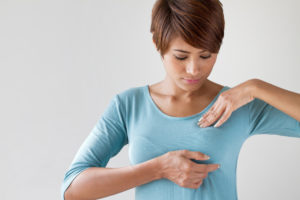Many of us are totally unaware of the many insidious symptoms that we may be living with daily that are signs of hormonal imbalance
Whether women – of all ages, men and children alike are exposed to imposter hormones or “xeno-estrogens” on a daily basis. See my newsletter for more info
Sharing my own little goodie – my hormonal assessment tool. This simple online tool allows you to both qualify and quantify your hormonal symptoms and more accurately understand your symptoms
Estrogen dominance is a term coined by Dr. Lee in his first book on natural progesterone. It describes a condition where a woman can have deficient, normal, or excessive estrogen, but has little or no progesterone to balance its effects in the body. Even a woman with low estrogen levels can have estrogen dominance symptoms if she doesn’t have any progesterone.
Strictly speaking, it’s possible that we are all — men, women, and children — suffering a little from estrogen dominance because there is so much of it in our environment. You would have to virtually live in a bubble to escape the excess estrogens we’re exposed to through pesticides, plastics, industrial waste products, car exhaust, meat, soaps, and much of the carpeting, furniture, and paneling that we live with indoors every day. You may have on-and-off sinus problems, headaches, dry eyes, asthma, or cold hands and feet for example, and not know to attribute them to your exposure to xenohormones. Over time the exposure will cause more chronic problems such as arthritis and premenopause symptoms and maybe a direct or indirect cause of cancer.
The most serious consequence of estrogen dominance is breast cancer. Estrogen dominance could also be called progesterone deficiency because it is the imbalance between estrogen and progesterone in a woman’s body that causes so many physical and emotional problems at midlife. A number of studies have found that insufficient progesterone may be a more important factor than excessive estrogen in increasing a woman’s risk of breast cancer. One of the most significant studies of the relationship between low levels of natural progesterone and increased breast cancer risk was published in the American Journal of Epidemiology in August 1981. In this study, conducted by researchers from Johns Hopkins University’s School of Public Health, women of childbearing age who were having difficulty conceiving were divided into two groups.

The first group consisted of women whose infertility was attributed to progesterone deficiency, while the second group was composed of women with infertility due to nonhormonal causes. All of the women were followed for thirteen to thirty-three years and the incidence of breast cancer in each group was recorded. At the study’s conclusion, researchers found that the infertile women with progesterone deficiency had a premenopausal breast cancer risk that was 540 percent greater than that of women whose infertility was not related to their hormone status. Not only that, but these women had a 1,000 percent greater risk of death from all types of cancer. After menopause, when estrogen levels declined, the breast cancer risk was similar in the two groups, suggesting that progesterone’s protective effects were much more critical during the premenopausal period.

